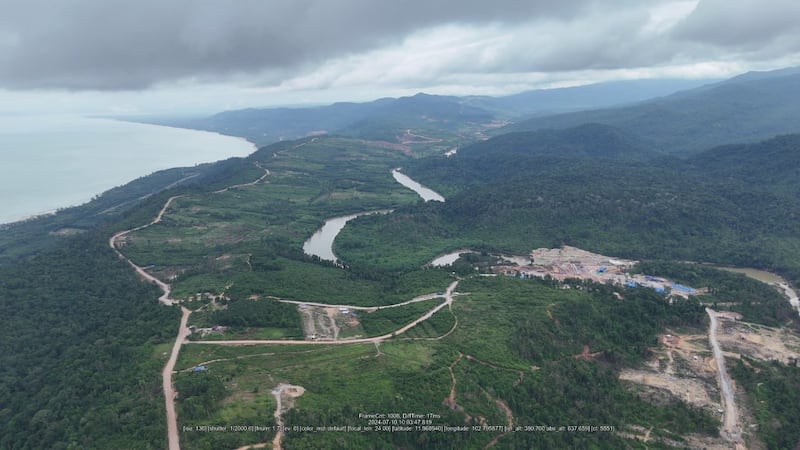Cambodian environmentalists are warning of illegal logging a year after the government approved a controversial hydropower project located inside a wildlife sanctuary.
Owned by Ly Yong Phat, a powerful and well-connected senator and tycoon, the 150mw Stung Meteuk hydropower project is made up of three dams on a stretch of river running between Koh Kong and Pursat provinces on the Cambodian-Thai border.
The sites overlap with Phnom Samkos Wildlife Sanctuary, and environmentalists have said there has been significant illegal logging, with forests being cleared beyond the bounds of the hydrodam reservoir.
“The [government] management over the clearance of trees in the reservoir is murky,” said Seng Sokheng, a natural resources researcher.
“This happened to the hydropower dam on the Lower Sesan river. We saw so many trees were cut down outside the reservoir’s perimeter.”
In 2017, police said they had found that builders of the Lower Sesan 2, a hydropower dam in Stung Treng province owned by tycoon Kith Meng, had used the reservoir clearance license to launder illegally logged wood.
Sokheng said a similar process was playing out at the Stung Meteuk site, which should never have been greenlit in the first place given its proximity to the biodiverse-rich wildlife sanctuary.
“I have no doubt that it will negatively impact the environment, the ecological system in the area,” he said.

Logging routes
In June, an investigation by environmental news site Mongabay found evidence of illegal logging routes stretching deep into the forest, far beyond the reservoir's boundaries.
Cambodia's old growth forests have long been plagued by deforestation, with rare, valuable timber cut and sold to Vietnam, China and elsewhere.
Neither government spokesperson Pen Bonna nor Stung Meteuk Hydropower could be reached for comment.
Heng Kimhong, executive director of Cambodian Youth Network, a local NGO that focuses on environmental issues among others, said the government routinely failed to adequately weigh the negative impacts of hydropower projects, including loss of land and livelihood for local community members.
Given that the project has gone ahead, however, he urged more action to be taken to prevent timber laundering.
“The clearance of the bottom of the basin must ensure that there is no illegal logging from other protected areas into this area,” he said. “Don’t take any opportunity to exploit the natural resources that affect the forest cover in that area or nearby wildlife sanctuaries.”
An environmental activist who asked to remain anonymous for security reasons estimated that more than 10 million cubic meters of timber would be logged from the legal bounds of the reservoir, with much of it sold to China.
Translated by Sum Sok Ry. Edited by Abby Seiff.
